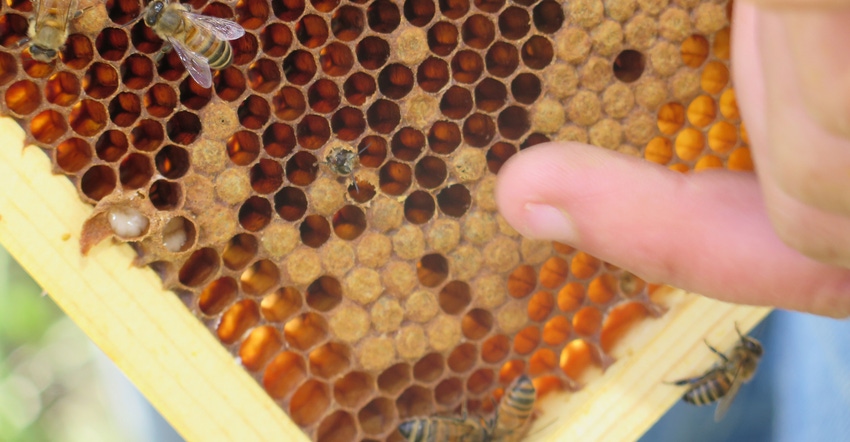
Here is your quiz for the day. What percentage of flowering plants requires pollination by animal or insect? If you said 80%, you have either done your homework, or you care a lot about honeybees and other pollinators.
“Talking about pollinator protection is important,” says Jon Charlesworth, Benton County Extension ag educator. He recently presented tips developed by entomologists and others to help protect pollinators in situations where pesticides are being sprayed.
Here are five ways to minimize risk to honeybees and other pollinators:
1. Understand the habits of honeybees. For example, the average distance a honeybee flies from the hive is a half mile, Charlesworth notes. However, they can venture out 2 to 3 miles in search of nectar.
2. Follow an integrated management plan. Instead of just planning to spray pesticides at certain times during the season, scout first to see if the problem you’re trying to control is actually present in the field. This could prevent you from using more pesticides than necessary, and save money at the same time.
3. If you must spray, pick a pesticide that is not toxic or less toxic to bees. By their nature, insecticides will likely be most toxic, Charlesworth says. Many other pesticides aren’t toxic to bees. Neonicotinoids, often applied as seed treatment insecticides, are toxic to honeybees if bees come in contact with them. Minimize the amount of talc or graphite dust that escapes the planter, because it could carry insecticide particles.
4. Spray after dark, if possible. If effectiveness of the product you’re applying isn’t affected by time of day, consider spraying in the evening, preferably after dark. Honeybees are generally out in the daytime searching for nectar and return to the hive at night, Charlesworth says.
5. Avoid spraying near bees and at sensitive times. If you know there are beehives near a field or along the edge of a field, consider leaving a border that isn’t sprayed, Charlesworth says. Also, realize that when crops like alfalfa or soybeans are blooming, bees will be attracted to them. Avoid spraying products toxic to bees at those times, when possible.
About the Author(s)
You May Also Like




